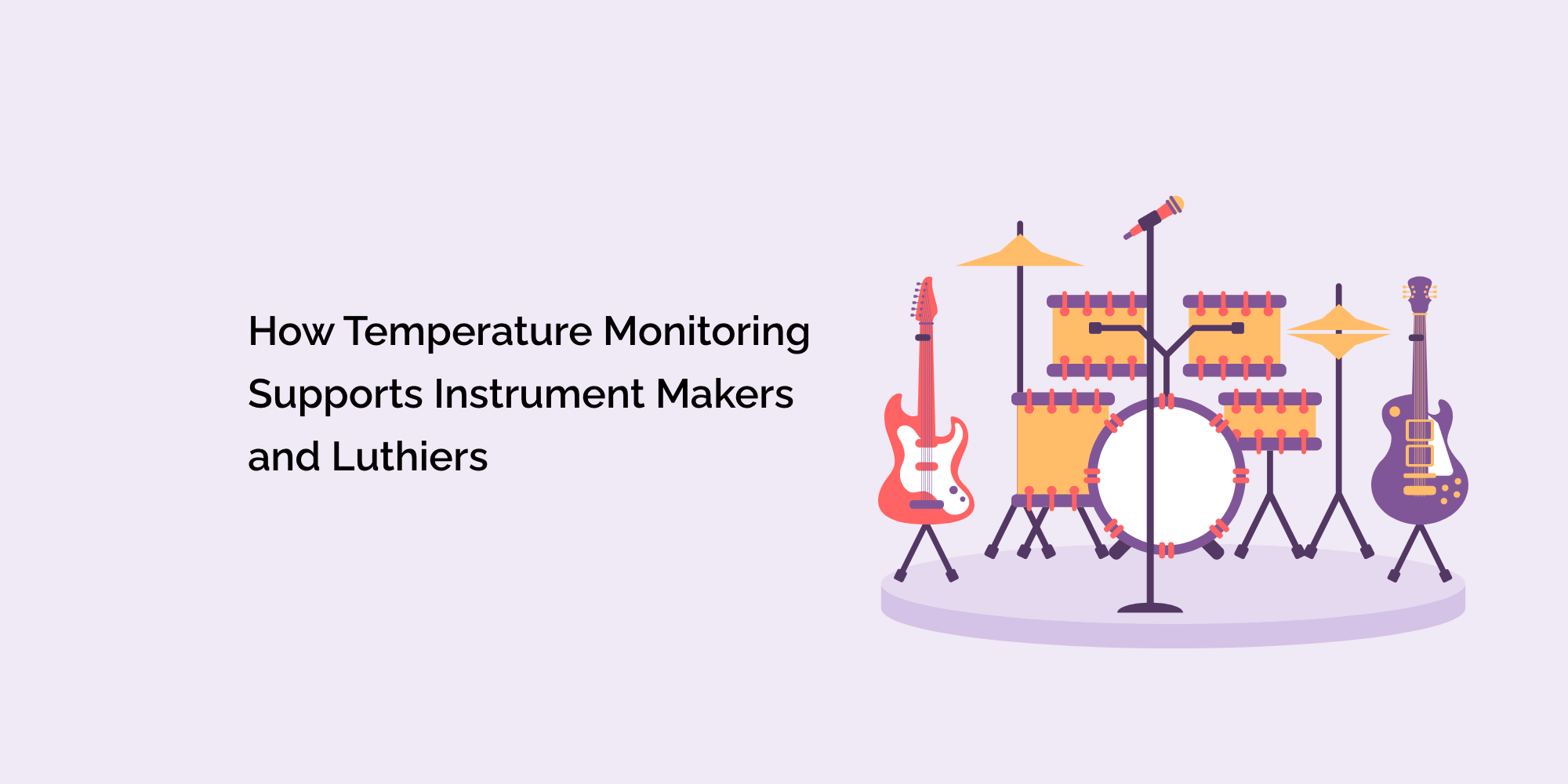Temperature monitoring plays a crucial role in instrument making and Lutherielutherie. Creating exquisite musical instruments requires meticulous attention to detail, and temperature control is a vital factor contributing to the devices' quality and durability. This detailed blog will explore how temperature monitoring supports instrument makers and luthiers throughout various stages of instrument creation, including wood selection, material preparation, construction, and finishing. By understanding the significance of temperature in instrument making and implementing effective temperature monitoring practices, instrument makers and luthiers can enhance their craft, ensure consistent quality, and create instruments that stand the test of time.
The Influence of Temperature on Instrument Making
Temperature plays a vital role in various stages of instrument making. From wood selection and preparation to gluing, joinery, and finishing, temperature impacts the instruments' stability, bonding, and overall quality. Understanding and controlling temperature is essential for consistent craftsmanship.
Understanding the Importance of Temperature Monitoring
Temperature monitoring is crucial for instrument makers and luthiers as it ensures consistency in instrument production, preserves material integrity, and creates instruments with stable performance characteristics. Monitoring temperature allows for precise control and reduces the risk of temperature-related issues.
Temperature Monitoring in Wood Selection and Preparation
Temperature monitoring begins with the proper storage and acclimatization of wood. Maintaining optimal temperature and humidity during wood storage ensures stability and prevents warping or other material distortions. Monitoring moisture content helps achieve ideal wood conditions.
Temperature Control during Gluing and Joinery
Temperature plays a significant role in gluing and joinery processes. Proper temperature control ensures optimal glue drying and bonding. Monitoring temperature during these processes helps achieve strong and durable joints.
Temperature Considerations in Finishing and Drying
Temperature influences finish application and curing. The temperature during finishing affects the drying time, adhesion, and overall finish quality. Monitoring temperature and humidity levels is crucial for proper drying and avoiding issues like cracking or bubbling.
Implementing Temperature Monitoring Solutions
Instrument makers can utilize various temperature monitoring solutions. Traditional thermometers and hygrometers provide essential temperature and humidity readings. Digital temperature sensors and data loggers offer more accurate measurements and data logging capabilities. Wireless monitoring systems enable remote tracking and real-time monitoring.
Placement of Temperature Sensors in the Workshop
Strategic placement of temperature sensors is crucial for accurate readings. Detectors should be placed in critical areas such as wood storage rooms, gluing stations, and finishing areas. Proper sensor placement ensures monitoring of temperature fluctuations in key instrument-making processes.
Calibration and Maintenance of Temperature Monitoring Devices
Regular calibration of temperature monitoring devices is necessary to ensure accuracy. Calibration methods can include using known reference temperatures or professional calibration services. Routine maintenance of monitoring devices guarantees their reliability and longevity.
Benefits of Temperature Monitoring for Instrument Makers and Luthiers
Temperature monitoring offers numerous benefits to instrument makers and luthiers. It ensures consistent quality in instrument production, allowing precise control over the materials' stability. Instrument makers can enhance their craftsmanship by monitoring temperature, creating stable performance characteristics, and extending the instruments' longevity.
Collaborating with Temperature Experts and Research
Instrument makers can benefit from collaborating with temperature experts and staying informed about the latest research. Understanding the effects of temperature on materials and staying updated with best practices enhances instrument-making processes and promotes continuous improvement.
Educating Instrument Makers on Temperature Monitoring
Raising awareness about temperature monitoring and providing training to instrument makers is essential. Education ensures instrument makers understand the importance of temperature control and are equipped with the knowledge and skills to implement effective monitoring practices.
Certainly! Here are some frequently asked questions (FAQs) regarding temperature monitoring in instrument making and Lutherielutherie:
Can temperature monitoring help prevent issues like warping or cracking in instruments?
Temperature monitoring plays a vital role in preventing issues like warping or cracking in instruments. By maintaining stable temperature conditions, instrument makers can minimize the risk of material distortions and structural problems due to temperature fluctuations.
Is collaboration with temperature experts necessary for instrument makers?
Collaboration with temperature experts can provide valuable insights into the effects of temperature on instrument materials and processes. It helps instrument makers stay informed about the latest research and best practices, enhancing their understanding and implementation of temperature monitoring in their craft.
How can instrument makers educate themselves about temperature monitoring?
Instrument makers can educate themselves about temperature monitoring through workshops, seminars, online resources, and collaboration with experienced professionals. It is essential to stay updated on temperature control techniques and monitoring technologies to ensure the highest quality instrument production.
Conclusion
Temperature monitoring is vital in supporting instrument makers and luthiers throughout the instrument-making process. By understanding the influence of temperature and implementing effective monitoring practices, instrument makers can enhance their craft, maintain consistent quality, and create instruments with stability, durability, and superior performance characteristics. From wood selection and preparation to gluing, joinery, finishing, and beyond, temperature monitoring ensures precise control and promotes the longevity of the instruments. Collaborating with temperature experts, staying informed about research, and educating instrument makers further strengthen the bond between temperature monitoring and instrument craftsmanship. By prioritizing temperature control, instrument makers and luthiers can continue to create exceptional instruments that resonate with beauty and excellence.








